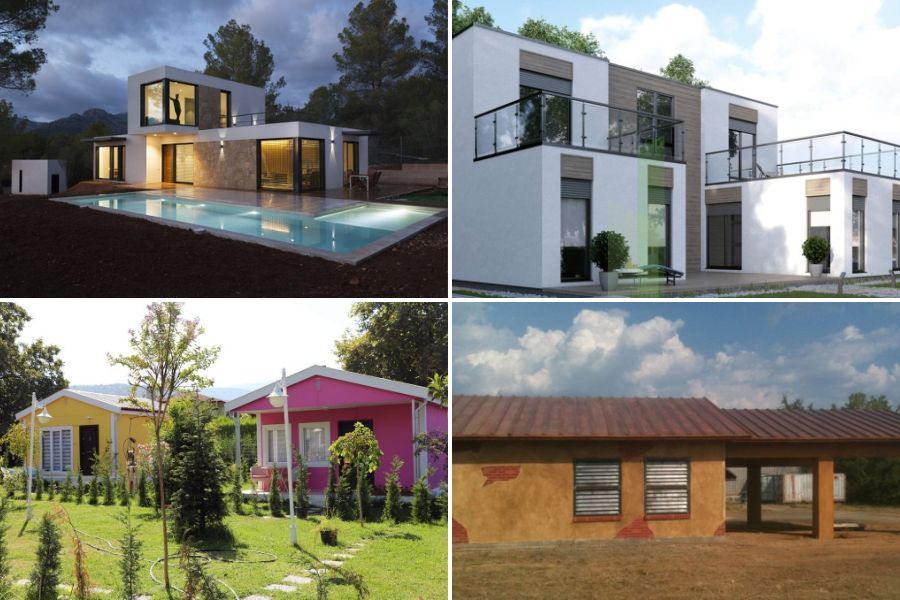Last updated on
Discover which states have embraced accessory dwelling units (ADUs) as a solution to expand housing options.
Key takeaways:
- Zoning reforms are allowing ADUs in previously restricted areas.
- Streamlined processes are being implemented for expedited ADU construction.
- Financial incentives, such as grants and loans, are emerging to support ADU development.
- Sustainability incentives may encourage green building practices in ADUs.
- Technological integration, like prefabricated units, is streamlining the ADU building process.
What Are ADUs?

Accessory Dwelling Units, commonly known as ADUs, are secondary housing units on a single-family residential lot. ADUs come in various forms, including:
- Detached ADUs, stand-alone structures separate from the primary residence.
- Attached ADUs, which share a wall with the main home.
- Garage conversions, where an existing garage is transformed into a living space.
- Over-garage ADUs, which are built on top of a garage structure.
- Basement conversions, also known as “in-law suites,” which repurpose basement space for living quarters.
ADUs provide flexible living arrangements and can cater to family members, renters, or used as home offices. They’re becoming an increasingly popular solution for expanding housing options within existing neighborhoods, allowing homeowners to make the most out of their property.
The Legal Landscape
Navigating the intricate web of laws and regulations governing Accessory Dwelling Units (ADUs) requires an understanding of varied jurisdictional attitudes. Legislation is not uniform; it varies from state to state, and often, within the states, from city to city.
The primary legal frameworks that dictate the allowance of ADUs revolve around zoning laws, building codes, and local ordinances. Zoning laws dictate where ADUs can be built, specifying lot sizes, building heights, and the minimum distance an ADU must maintain from the main residence and property lines. Building codes address how ADUs must be constructed, covering safety standards such as fire codes, electrical systems, and plumbing requirements. Local ordinances then overlay additional regulations that may include, but are not limited to, parking provisions, owner occupancy clauses, and rental term restrictions.
State governments sometimes step in to promote or restrict ADU construction. For instance, some states have passed legislation to streamline the approval process for ADUs, mandating that cities comply with state-set guidelines designed to increase housing stock and affordability. On the other side, certain states allow for considerable discretion among their municipalities, hence localities might have more restrictive measures regarding ADU creation.
The legal landscape is in flux, reflecting growing interest in ADUs as solutions to housing shortages. Lawmakers are responding with updated statutes and ordinances to both facilitate and manage the growth of these units. Potential ADU builders must stay abreast of the current laws, which can change frequently and significantly alter the feasibility of an ADU project.
States That Allow ADUs
Several states have embraced the concept of accessory dwelling units, recognizing their potential to expand affordable housing options. In California, legislation has been particularly supportive, mandating that local jurisdictions ease restrictions to facilitate ADU construction. Oregon follows suit, with statewide standards that override local zoning laws to promote these units.
Meanwhile, in Washington State, recent changes to laws have made it easier for homeowners in many cities to build ADUs. Colorado’s Denver has also updated zoning codes in favor of ADU development. Some states like Minnesota and New Hampshire provide more localized control, with ADU regulations varying significantly between cities.
It is essential to note that despite statewide allowances, individual municipalities often have the final say on the specific regulations governing ADU construction, such as size, placement, and design standards. Understanding your city’s zoning ordinances is crucial before planning an ADU project.
Case Studies
Portland, Oregon, and Seattle, Washington, have emerged as exemplary models in the successful implementation of ADUs. After relaxing regulations and removing barriers like parking requirements and owner-occupancy rules, Portland experienced a surge in ADU construction, illustrating the direct correlation between reduced restrictions and increased ADU development.
California stands out by mandating state-wide ADU legislation, which compels cities to conform to less stringent standards. This progressive approach aims to combat the state’s severe housing crisis and has led to a significant boost in ADU permits.
Austin, Texas, provides valuable insights with its streamlined permit process and incentives for ADU construction, aligning with its reputational focus on innovation and housing diversity.
These cases validate the potential of ADUs to alleviate housing shortages when coupled with supportive city policies and initiatives. Each exemplifies unique strategies to foster the growth of ADUs, offering a blueprint for other jurisdictions considering similar programs.
Future of ADU Regulations
In considering the trajectory of ADU regulation, there’s a clear trend toward greater flexibility. Communities across the nation are responding to housing shortages by relaxing restrictions and simplifying the approval process. Here are some developments to watch:
– **Zoning Reforms**: Many regions are revising zoning laws to accommodate ADUs, making them permissible in areas previously off-limits.
– **Streamlined Processes**: To encourage more ADUs, some states may adopt standardized, expedited permitting processes.
– **Financial Incentives**: Expect to see more financial programs emerge, such as grants and low-interest loans, to assist homeowners in building ADUs.
– **Sustainability Incentives**: Future regulations may also include incentives for green building practices within ADUs, aligning with broader environmental goals.
– **Technological Integration**: Advancements in construction technology, like prefabricated units, could be embraced in code allowances, streamlining the building process.
Monitoring these trends can signal potential investment opportunities or the chance to develop ADUs more efficiently. Stay informed as ADU regulations evolve; they provide a living example of adaptive urban planning in response to societal needs.
Related reading:
Table of Contents





